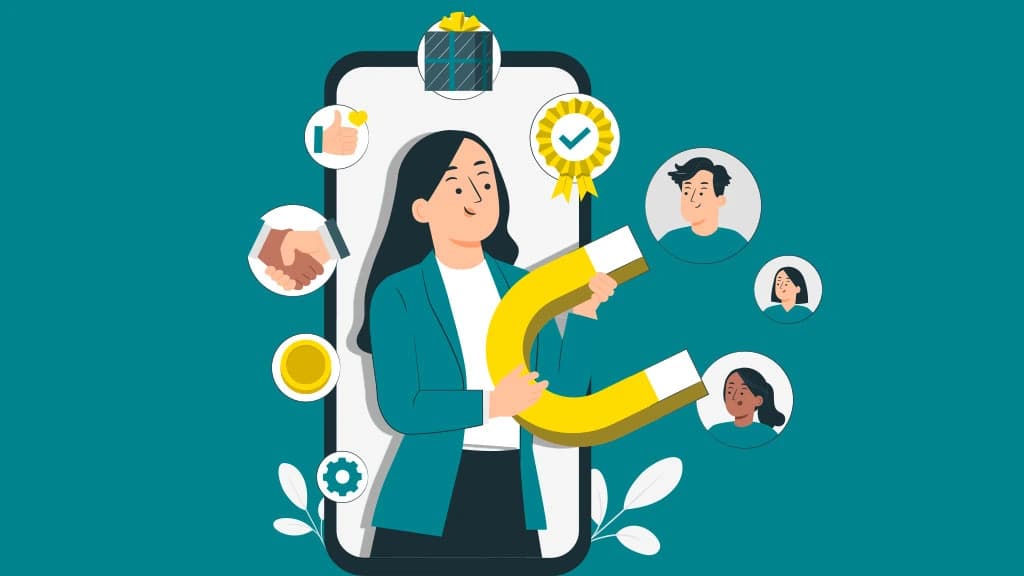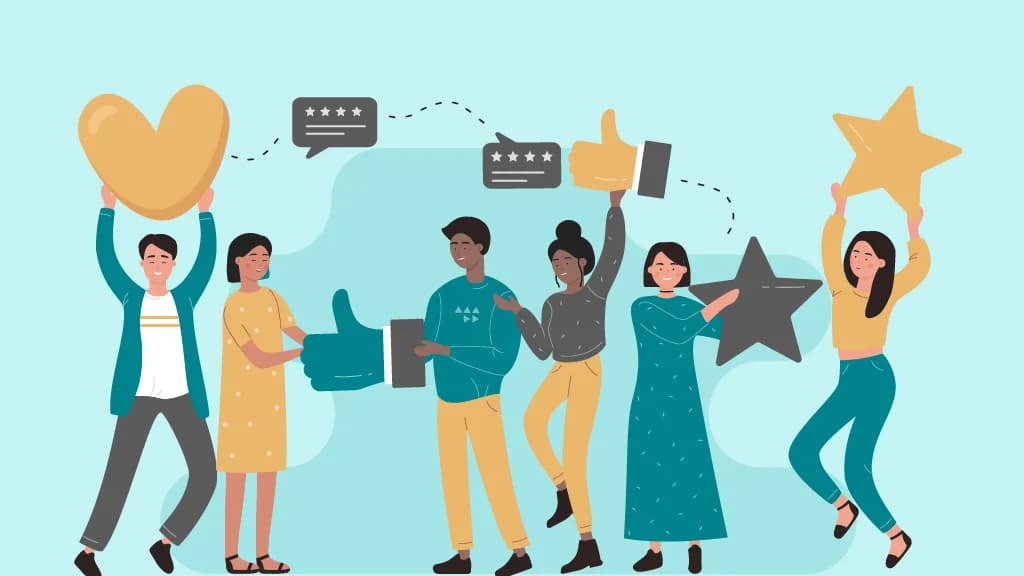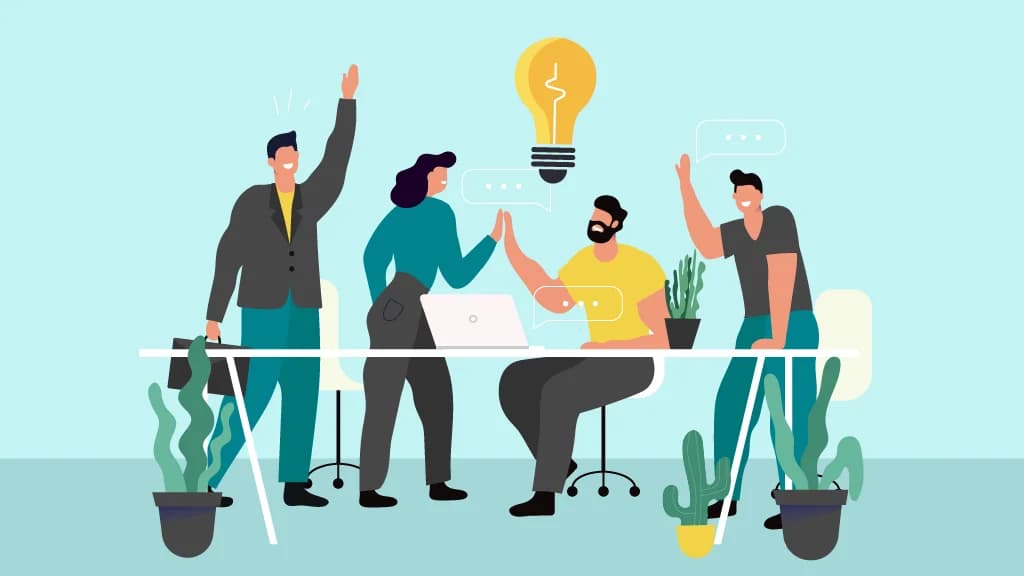
You put time and effort into your rewards program, yet your employees still don’t feel truly appreciated. The problem isn’t a lack of recognition—it’s an outdated approach that doesn’t resonate with today’s workforce. A great human resource strategy goes beyond bonuses; it builds a culture where people feel valued every day. Here are five practical HR strategies to help you create a rewards program that actually works. Let’s get started!
Unlocking the Power of HR Strategy
Before we dive into the hacks, let’s take a moment to define what Human Resource strategy really means. It’s not just about policies and procedures—it’s a roadmap that connects your employees’ practices to your company’s bigger goals. Think of it as the blueprint that ensures every hire, training program, and recognition effort contributes to business success.
When done right, a human resource strategy helps develop a workplace where employees feel valued, motivated, and aligned with the company’s mission. However, to make a real impact, strategic HR planning is essential.
Why a Thoughtful HR Strategy Matters
A strong Human Resource strategy isn’t just about keeping things running—it’s about building a thriving workplace. Here’s why it’s so important:
- Align HR with Business Goals
Your HR strategy should do more than manage employees—it should drive business success. Whether you’re focused on growth, innovation, or customer experience, your hiring, training, and rewards programs should all support those goals. If you want an agile, forward-thinking company, your HR approach needs to reflect that. - Boosts Employee Engagement
When employees feel seen, heard, and valued, they’re more likely to go the extra mile. But engagement doesn’t happen by chance—it requires intentional HR strategies that include meaningful recognition, career growth opportunities, and a workplace culture that people actually enjoy being part of. - Attract and Retain Top Talent
In today’s competitive job market, great candidates have plenty of options. A well-planned Human Resource strategy ensures your company stands out—not just with good pay but with flexibility, opportunities, and a strong sense of purpose. Employees who feel supported and challenged are far more likely to stay. - Cost Efficiency
Turnover is expensive. Constantly recruiting, hiring, and training new employees drains time and money. A smart HR strategy helps reduce these costs by focusing on retention, better workforce planning, and creating an environment where people want to stay and succeed
The Diverse Landscape of HR Strategies
Every organization is unique, as is the way it manages, supports, and grows its personnel. The finest HR strategies are adaptable and develop with business objectives and company culture.
Think of human resources as an organization’s heartbeat, ensuring that people feel valued, engaged, and enabled to do their best work. Human resources strategy creates the groundwork for success, whether it is employing the appropriate people, cultivating a strong business culture, or creating an inclusive workplace. Each HR strategy is meant to handle a certain component of human resource management. Here are some HR strategy examples and common types and :
- Talent Acquisition: Finding and recruiting the right people goes beyond filling roles—it’s about building a strong employer brand, simplifying the hiring process, and making a great first impression. A smooth onboarding experience helps new hires feel welcome, ensuring they stay engaged and grow with the company.
- Employee Engagement: Recognizing employees’ efforts, boosting well-being, and instilling a sense of belonging are all ways to keep them engaged. Open communication, supportive leadership, and chances for professional development all contribute to a workplace culture in which people feel appreciated and eager to participate.
- Performance Management: Employees perform best when they know what’s expected of them and receive regular, constructive feedback. Setting clear goals, offering coaching, and rewarding achievements—whether through promotions, bonuses, or new opportunities—helps create a culture of growth and excellence.
- Learning and Development: Employees thrive when they have opportunities to learn and grow. HR provides access to training, mentorship, and career development programs to build skills and boost morale and retention. Investing in people’s growth ensures they stay engaged and ready for the future.
- Diversity, Equity, and Inclusion (DEI): This strategy is about establishing a truly inclusive workplace that celebrates differences and ensures everyone has equal opportunities. Fair hiring practices, unconscious bias training, and inclusive policies help establish an environment where employees feel respected, valued, and empowered to succeed.
At its core, a great HR strategy is about people first, business second—because when employees thrive, the company does too.
Innovative HR Hacks for Rewards Programs
Here are some of the best hacks to make your rewards program truly impactful.
Hack 1: Personalized Rewards
Not everyone is motivated by the same things, so a one-size-fits-all approach is outdated. Offering tailored incentives shows employees you value them as individuals. Here’s how to make it happen:
- Get to Know Your Team: Take the time to understand what drives each employee. Conduct surveys, have one-on-one meetings, and encourage open conversations about what truly matters to them.
- Customize Rewards: Once you know what employees value, offer a mix of incentives. Some may appreciate extra paid time off, while others might prefer performance bonuses or opportunities for career growth.
- Be Transparent: Elaborate on how employees can earn their rewards and what conditions they must follow. Employees can develop trust and engagement with the program when they receive clear communications.
Hack 2: Recognition Programs
A little recognition can go a long way. Feeling respected and appreciated increases morale and motivation. Here’s how to establish a culture of recognition:
- Make Recognition a Habit: Recognizing hard work should be an important part of business culture. Increasing the frequency of recognition, whether in the form of weekly shout-outs, monthly incentives, or an annual appreciation event, keeps employees engaged.
- Encourage Peer Recognition: Allowing colleagues to recognize each other's contributions promotes friendship and teamwork.
- Ensure the rewards are meaningful: Find out what employees truly cherish and customize your recognition accordingly. A simple but thoughtful gift, a handwritten thank-you card or an extra day off can have a huge impact.
Hack 3: Flexible Benefits
A diverse workforce has distinct needs. Offering flexible benefits allows employees to select what is best for them. Here’s how you make it work:
- Offer a Variety of Options: Provide a mix of benefits, including health and wellness programs, childcare support, professional development funds, and remote work options.
- Let Employees Choose: Implement a benefits marketplace where employees can select the perks that matter most to them.
- Keep Benefits Relevant: Based on employee feedback, analyze and adjust your offers to keep them valuable and competitive.
Hack 4: Performance-Based Incentives
Employees feel inclined to go the extra mile when you tie rewards to performance. However, it needs to be fair and transparent. Here’s how to do it right:
- Set Clear Goals: Employees should clearly know what's expected of them and how their achievements translate into rewards.
- Be Fair and Transparent: Ensure that performance metrics are objective and consistently applied to avoid any perception of favoritism.
- Reward Timely: Don't wait too long to recognize accomplishments. Immediate rewards, such as spot bonuses or quarterly incentives, reinforce positive behaviors.
Hack 5: Employee Feedback
Your rewards program should evolve based on what employees actually want. Gathering and acting on feedback ensures your program remains effective. Here’s how:
- Survey Employees Regularly: Use pulse surveys to check in on what's working and what needs improvement.
- Take Action on Feedback: Identify recurring choices in the responses and adapt your reward program accordingly.
- Communicate Changes: Notify employees when you adjust the program based on their comments. The implementation creates a sense of program ownership and engagement.
With these simple yet effective HR hacks, you’ll build a workplace where employees not only perform their best but genuinely enjoy being a part of the team.
5 Must-Try HR Hacks to Revolutionize Your Rewards Program
Evaluating the Impact of Your HR Strategies
Building a great rewards program is just the beginning—you also need to ensure it’s making a real difference. Here’s how to measure success:
- Employee Engagement: To check in with employees, surveys and feedback are great tools. High engagement means your program is hitting the mark, while lower engagement signals areas that might need tweaking.
- Performance Metrics: Are employees more motivated? Are they reaching their goals? Productivity, sales, and customer satisfaction insights will help fine-tune your approach.
- Retention Rates: A strong rewards program should make employees want to stay. If your retention rates are improving, that's a great sign. If not, it might be time to revisit your incentives.
- Employee Feedback: Keep the conversation going. Regular check-ins and feedback sessions let employees share what they love about the program and what could be better.
Tips for Success
- Get Employees Involved: The best insights come from the people who will actually use the program. Their input will help make it more meaningful and effective.
- Use Technology to Your Advantage: Rewards platforms, feedback tools, and performance management software can help to streamline the process and keep it going smoothly.
- Stay Flexible: Employee needs vary, and your rewards program should adapt alongside them. Regular updates will help it remain current and effective.
Tools for Success
- Survey Tools: Solutions such as Advantage Pulse, which includes surveys, polls, quizzes, and the Moodometer, make it simple to collect employee feedback.
- Performance Management Software: AdvantageClub.ai’s digital platform, can track progress and ensure that rewards match achievements.
- Analytics Tools: Data-driven insights can help you understand what's working and where you might improve.
A rewards program isn’t a set-it-and-forget-it initiative. Regularly evaluating and refining your approach will keep employees engaged, motivated, and excited to be part of your team.
Supercharge Your Rewards Program with AI
Employees want a rewards program that motivates and engages rather than just offering bonuses. Their needs are constantly evolving, and so should your program. By leveraging smart tools, businesses can build a meaningful and engaging rewards experience that drives motivation and loyalty. AdvantageClub.ai uses AI to personalize rewards, offer seamless recognition programs, and provide real-time insights.
The most effective human resource strategies are adaptable, data-driven, and people-oriented. By integrating strategic HR planning with AI-powered solutions, you can design a rewards program that not only improves employee satisfaction but also reinforces your corporate culture.






